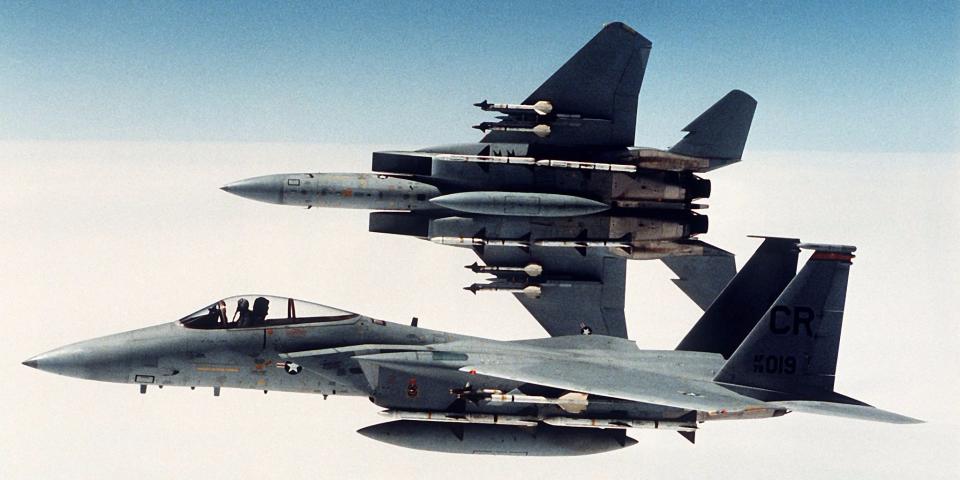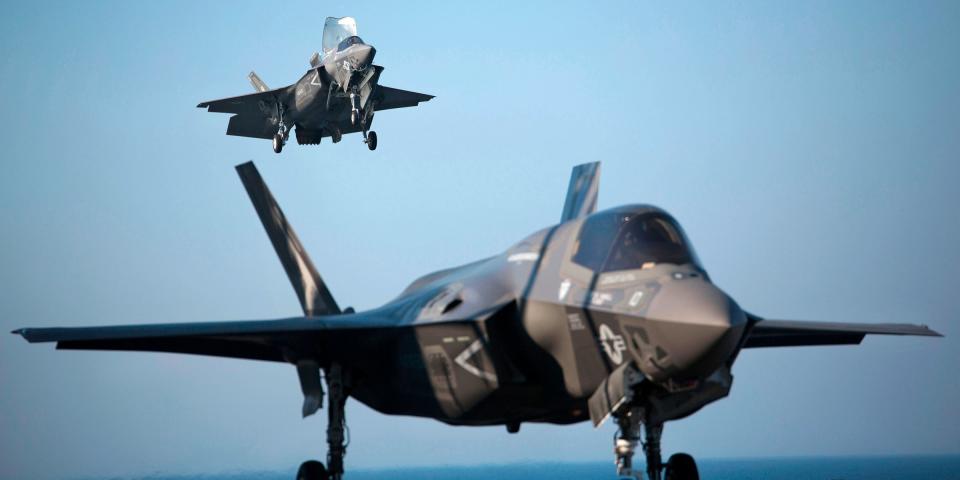Here's when an F-15 is better than an F-22 or an F-35

US Air Force
In a recent interview with Business Insider, Justin Bronk, a research fellow specializing in combat airpower at the Royal United Services Institute, revealed why the F-15, originally introduced four decades ago, is still more useful than either the F-22 or the F-35 in certain situations.
The F-15 is a traditional air-superiority fighter of the fourth generation. It's big, fast, agile, and carriers lots of weapons under the wing where everyone can see them. For that last reason, it's terrible at stealth, but the other side of the coin is that it's perfect for intercepting enemy aircraft.
Bronk says that when it comes to interception, a plane must "get up right next to the aircraft, fly alongside, show weapons, go on guard frequency, tell them they're being intercepted, that they're on course to violate airspace, and to turn back immediately."
An F-22 or F-35 shouldn't, and in some cases, can't do that.
The major advantage of fifth-generation aircraft is their stealth abilities and situational awareness. Even the best aircraft in the world would be lucky to lay eyes on any fifth-generation fighter, which means they can set up and control the engagement entirely on their terms.
But while this paradigm lends itself ideally to fighting and killing, interception is a different beast.
The advantages of the F-22, and particularly of the F-35, diminish greatly once planes get within visual range of one another. Also, fifth-gens usually carry their munitions inside internal bomb bays, which is great for stealth but doesn't really strike the same note that staring down an AIM-9 Sidewinder missile on the side of an F-15 would.
Simply put, a fifth-gen revealing itself to a legacy fighter would be akin to a hunter laying down his gun before confronting a wild beast.

US Air Force
"Fifth-gen fighters are not really necessary for that ... other, cheaper interceptors can do the job," Bronk said.
Furthermore, interception happens way more frequently than air-to-air combat. A US Air Force fighter most recently shot down an enemy plane in 2009 — and it was the Air Force's own wayward drone over Afghanistan. Interceptions happen all the time, with the Baltics and the South China Sea being particular hot spots.
The fifth-gens, however, make sense for entering contested airspace. If the US wanted to enter North Korean or Iranian airspace, it wouldn't just be to show off, and according to Bronk, the aircraft's stealth and situational awareness would afford them the opportunity to slip in, hit their marks, and slip out undetected, unlike an F-15.

US Air Force
In interception situations, it makes no sense to offer up an F-22 or an F-35 as a handicapped target to an older legacy plane. F-15s are more than capable of delivering the message themselves, and whoever they intercept will know that the full force of the US Air Force, including fifth-gens, stands behind them.
NOW WATCH: The F-35 has hit another snag — this time because it’s too stealthy
See Also:

 Yahoo Finance
Yahoo Finance 
